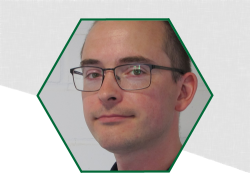In this paper, research conducted on the automation for a UV-laser-based surface pre-treatment of fibre-reinforced composites in order to improve adhesive bonding conditions is described.
In a preceding process step, a laser-line-triangulation-system gathered inline information on a composite partâs surface like topology and location of surface contaminants. This data is the basis for an automation of the laser-based surface treatment.
The gathered data describes the position of bonding areas and surface contaminants and is converted into relative coordinates of the laserâs scanning field. The laser process scans the bonding area to improve adhesive bonding. The process is monitored online by a broad bandwidth spectrometer (λ = 200nm â 1,100nm) to detect changes in surface composition. If the spectrometer detects signals related to specific surface contaminants during the laser scanning process, the position of the contamination is logged. In this case, only the areas that showed traces of surface contaminations are laser treated again until the spectrometer stops to detect relevant signals.
This work presents results of two series of experiments. During the first series of experiments, the spectrometer monitored a UV-laser process on a 2C-polyurethane with and without glass fibres. In both cases, the laser processing was performed on a clean and contaminated surface respectively. An industry standard release agent contaminated the plastic surfaces. The spectrometer detected differences between the clean and contaminated surface that will be used for an automatic process control.
In a second series of experiments, the authors performed a processing parameter analysis in order to identify a potential process window for laser-based surface pre-treatment for glass-fibre reinforced polyamide 6, a pure and a glass-fibre reinforced 2C-polyurethane. Contact angle analysis, surface roughness measurements, peel-strength and shear strength tests were performed.
The results show that an inline controlled laser process is robustly able to pre-treat composite surfaces based on spectrometric measurements.
Keywords
- Automation
- Bonding
- Composites
- Monitoring
- Surface

